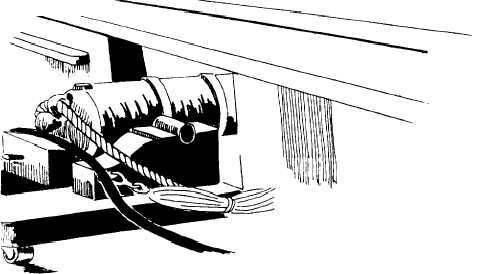| |
intensive training. Its traditional peacetime role
is to serve as a force-in-readiness. The Marine
Corps has a global outlook; therefore, Marines
stand ready to be deployed to any part of the
world to carry out their assigned missions.
Through its traditions and training, the United
States Marine Corps is always ready to fight for
freedom and, as the motto goes, “Semper
Fidelis.”
REFERENCES
United States Department of Defense, Functions
of the Department of Defense and Its Major
Components, DoD Directive 5100.1, Office of
the Secretary of Defense, Washington, D.C.,
1987.
The United States Government Manual 1989/90,
Office of the Federal Register, National
Archives and Records Administration,
Washington, D.C., 1989.
SUGGESTED READING
Estes, K.W., The Marine Officer’s Guide, 5th ed.,
Naval Institute Press, Annapolis, Md., 1985.
Krulak, V.H., First to Fight: An Inside View of
the Marine Corps, Naval Institute Press,
Annapolis, Md., 1984.
PORTHOLES
SOMETIMES, NOVICE SEAMEN WILL ASK, “HOW COME HOLES ON THE STARBOARD SIDE ARE
CALLED PORTHOLES INSTEAD OF STARBOARDHOLES?”
MANY OLD SALTS ARE READY WITH EX-
PLANATIONS,
BUT ACTUALLY THE NAME
“PORTHOLE” HAS NOTHING TO DO WITH ITS LOCA-
TION.
THE WORD ORIGINATED DURING THE REIGN OF HENRY VI OF ENGLAND (1485). IT
SEEMS THE GOOD KING INSISTED ON MOUNTING GUNS TOO LARGE FOR HIS SHIPS, AND
THEREFORE THE CONVENTIONAL METHODS OF SECURING THE WEAPONS ON THE FORECASTLE
AND AFTCASTLE COULD NOT BE USED.
A FRENCH SHIPBUILDER NAMED JAMES BAKER WAS COMMISSIONED TO SOLVE THE PROBLEM.
AND SOLVE IT HE DID BY PIERCING THE SHIP’S SIDES SO THE CANNON COULD BE MOUNTED
INSIDE THE FORE AND AFTER CASTLES.
THE FRENCH WORD “PORTE,” MEANING DOOR, WAS USED TO DESIGNATE THE REVOLUTION-
ARY INVENTION.
“PORTE” WAS ANGLICIZED TO “PORT” AND LATER CORRUPTED TO PORT-
HOLE.
EVENTUALLY,
IT CAME TO MEAN ANY OPENING IN A SHIP’S SIDE WHETHER FOR
14-11
CANNON OR NOT.
|

